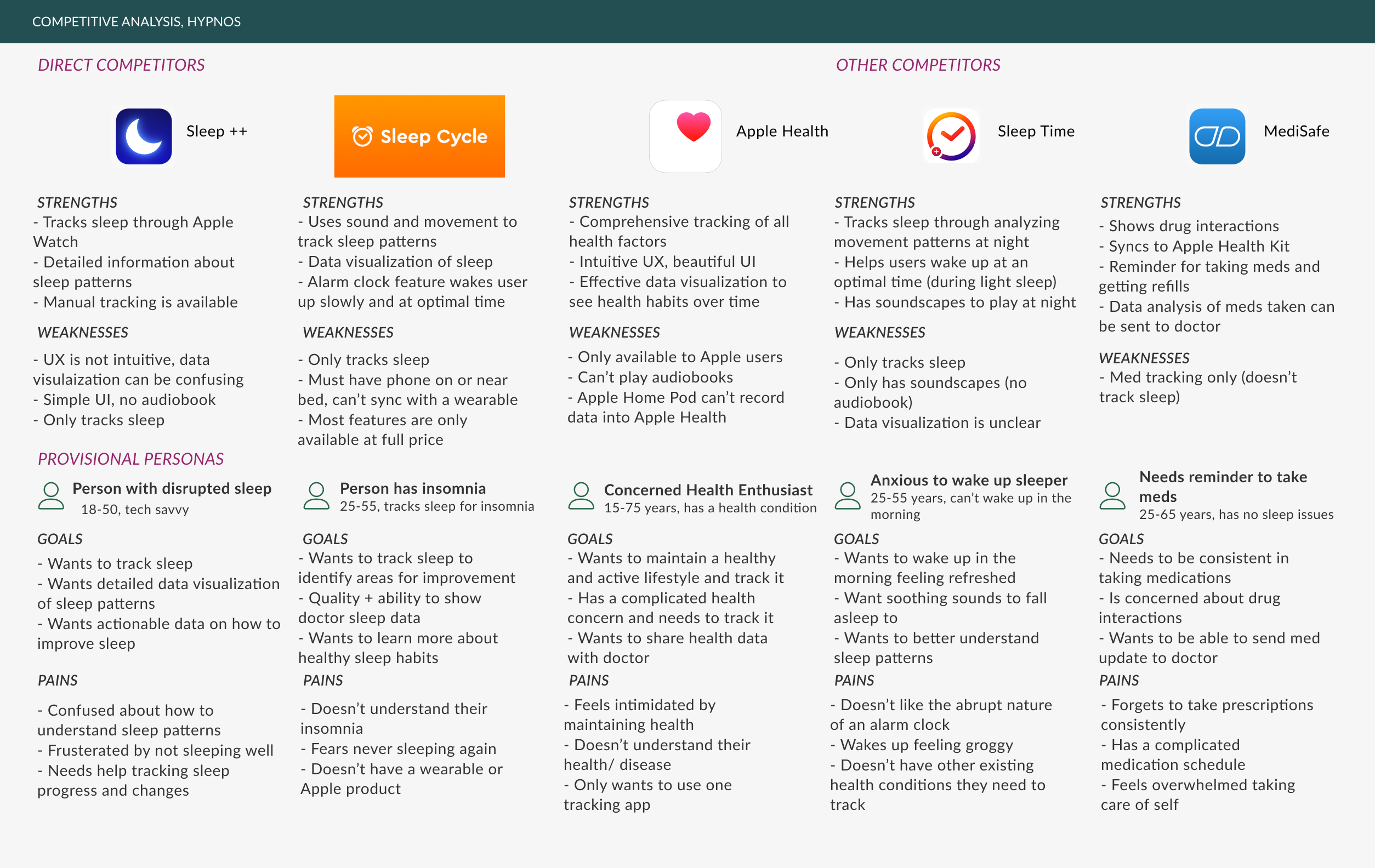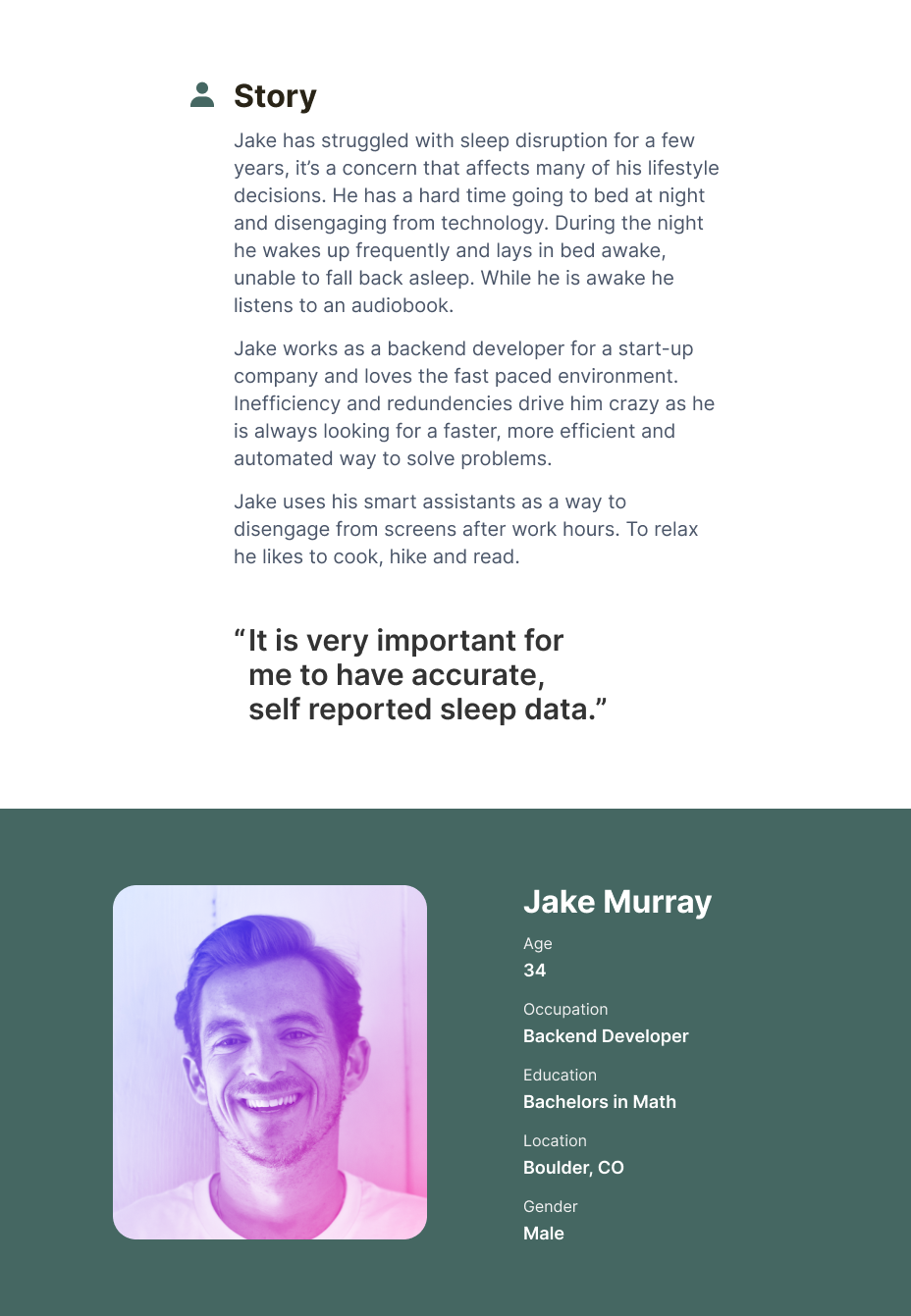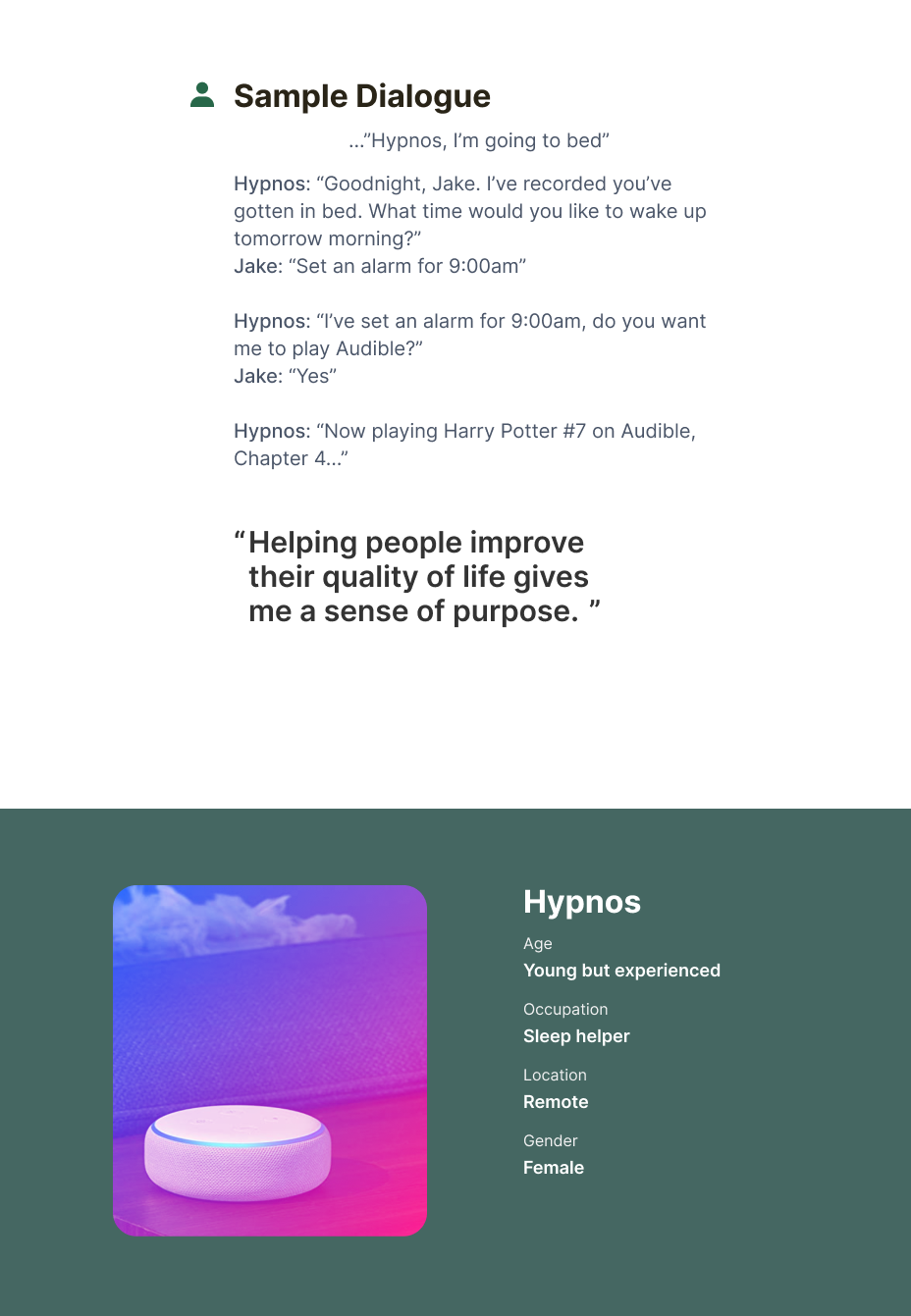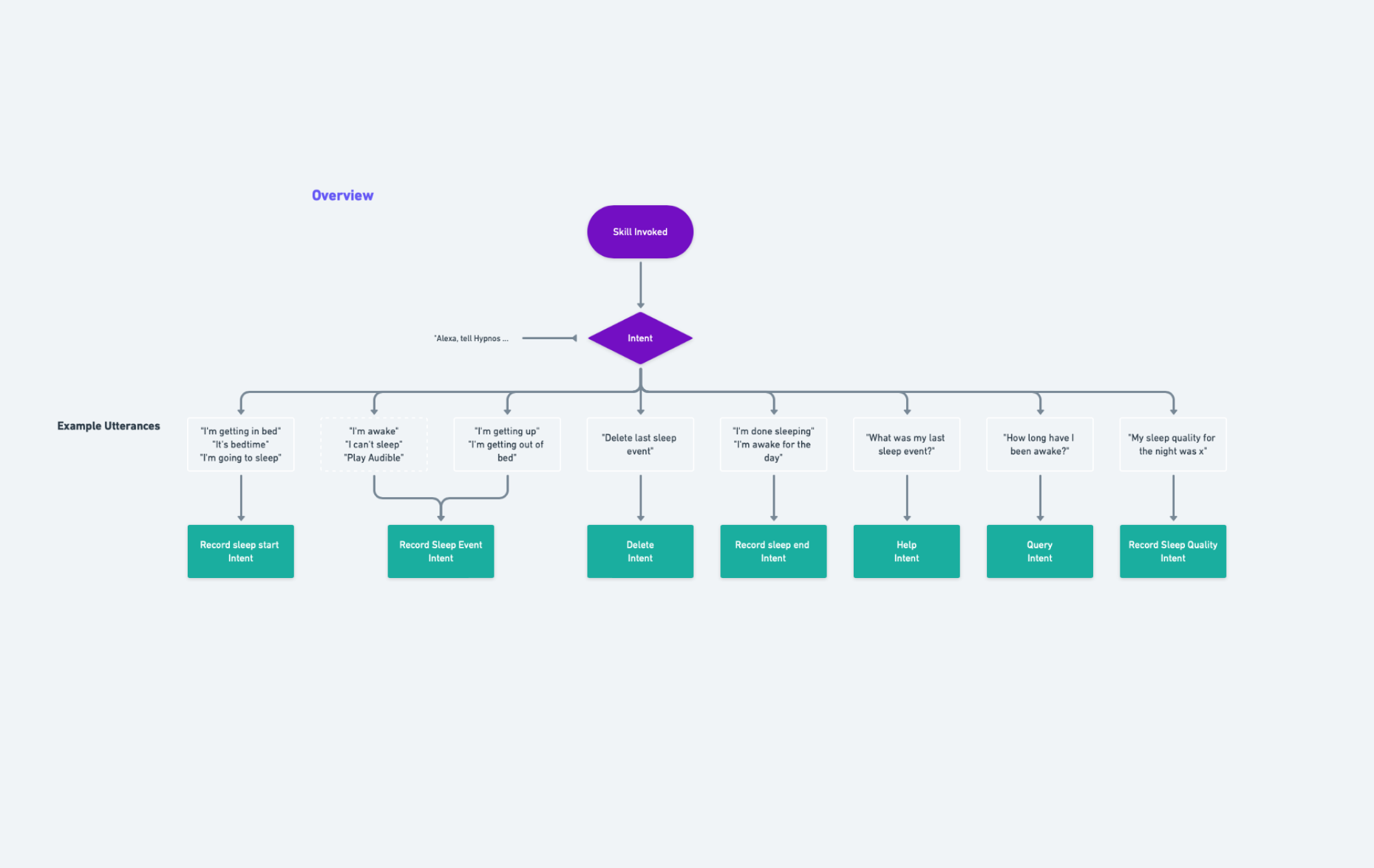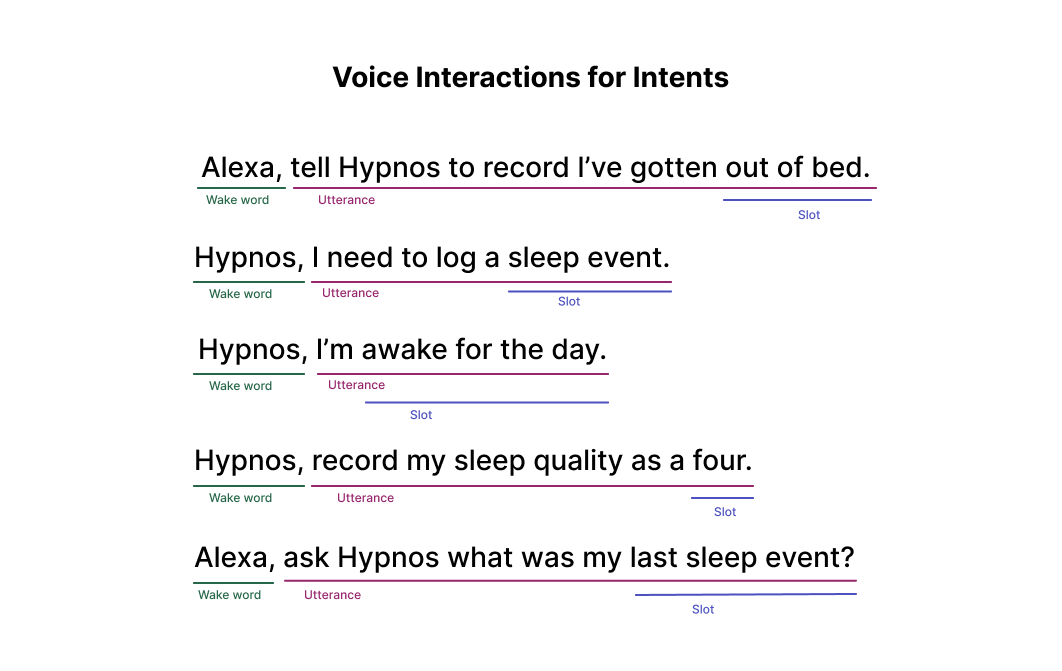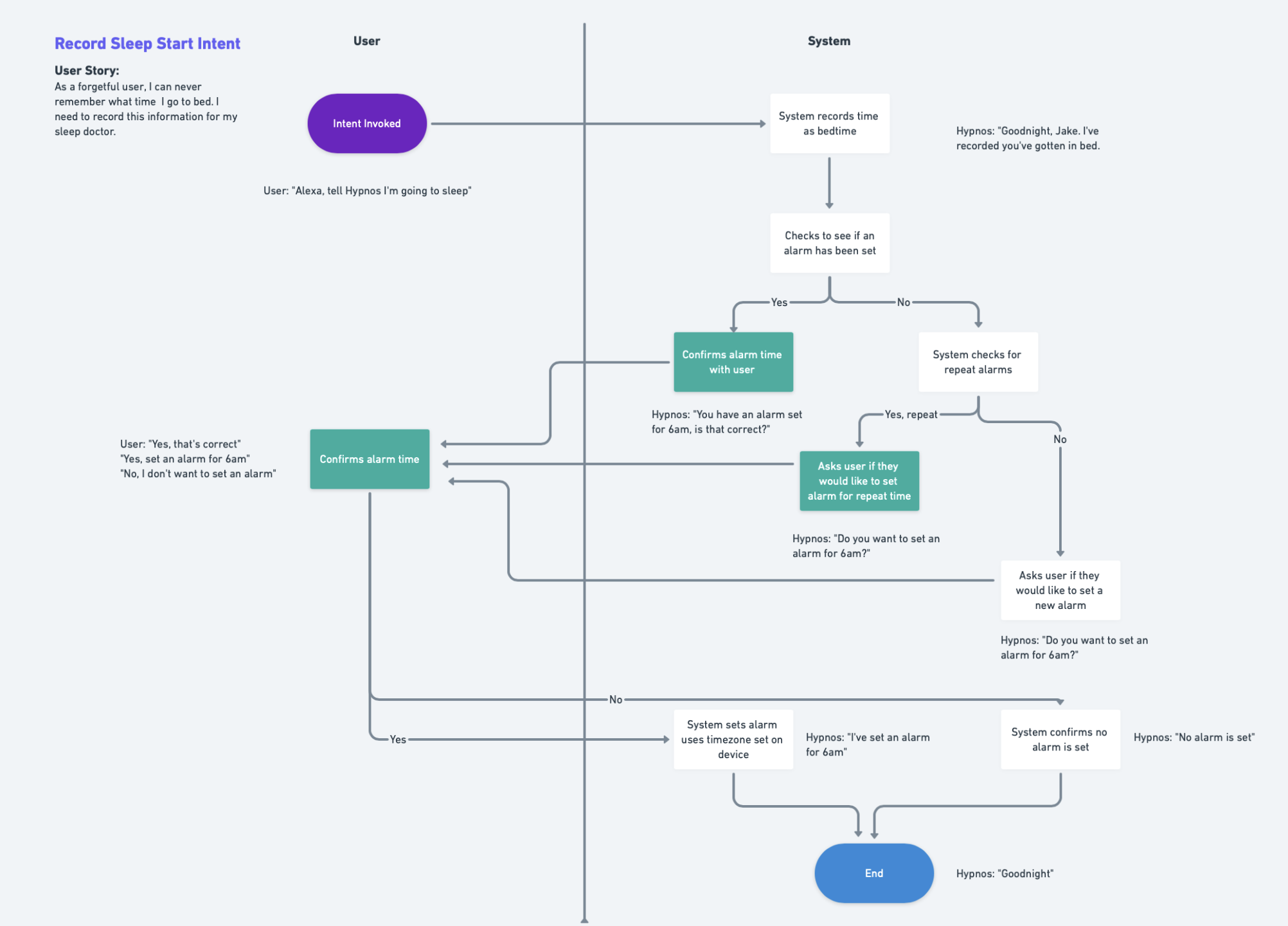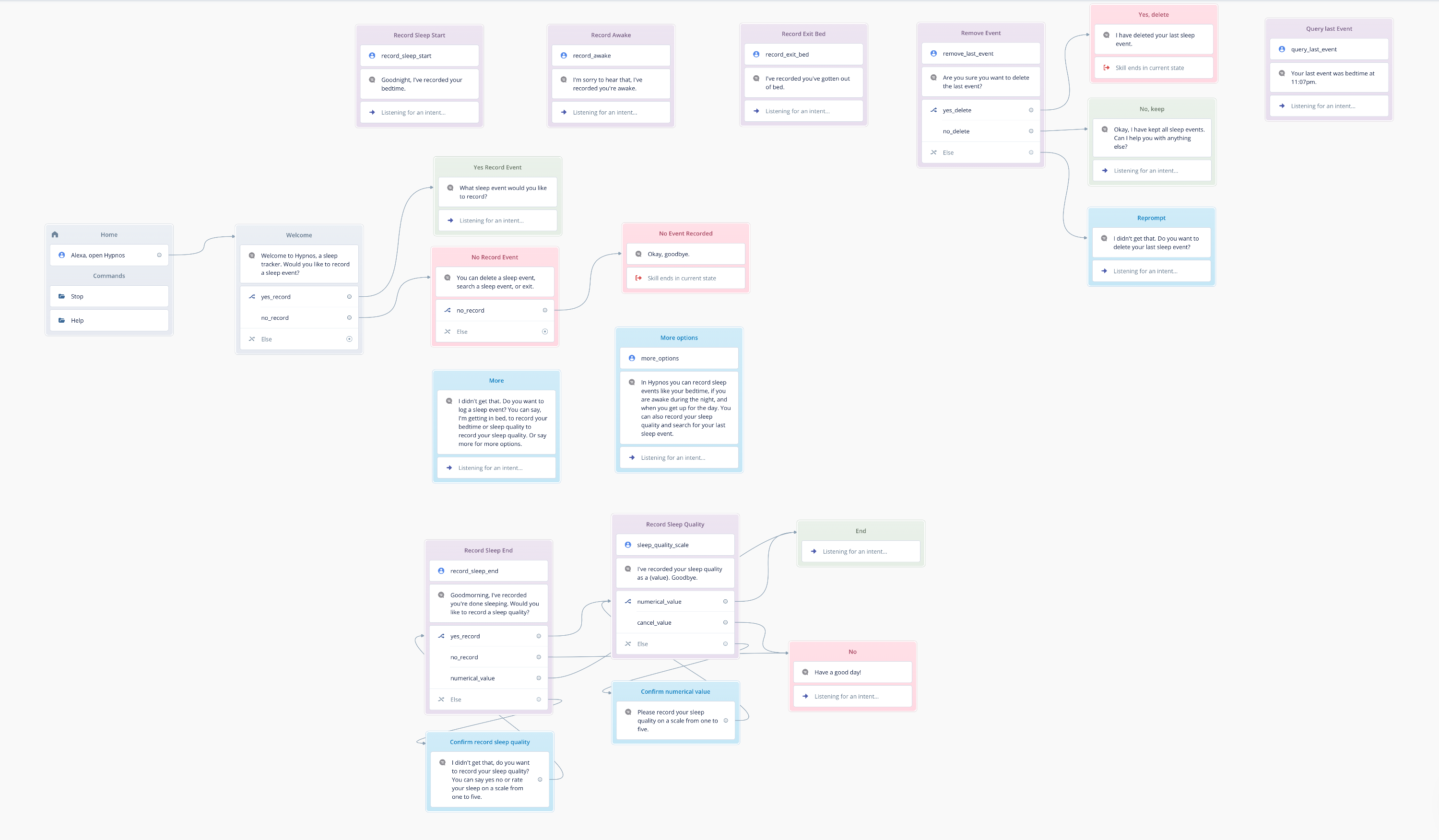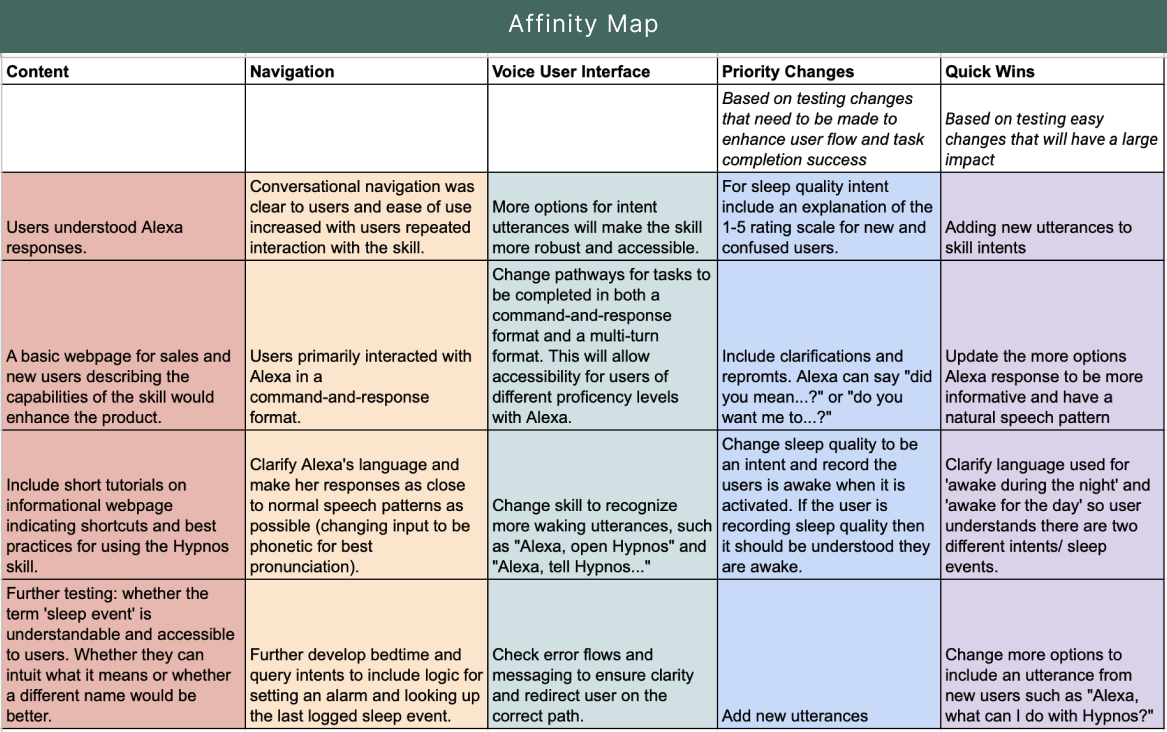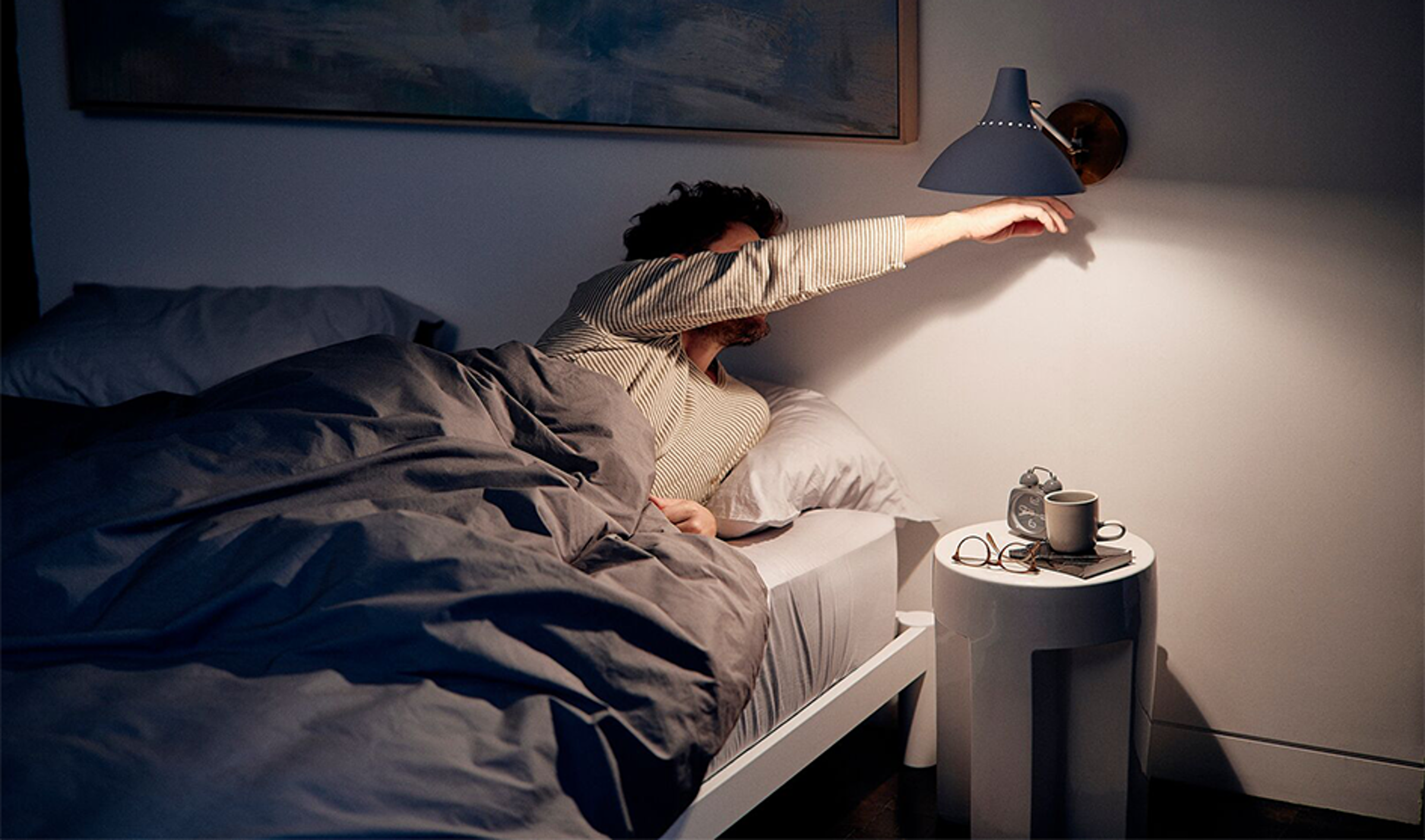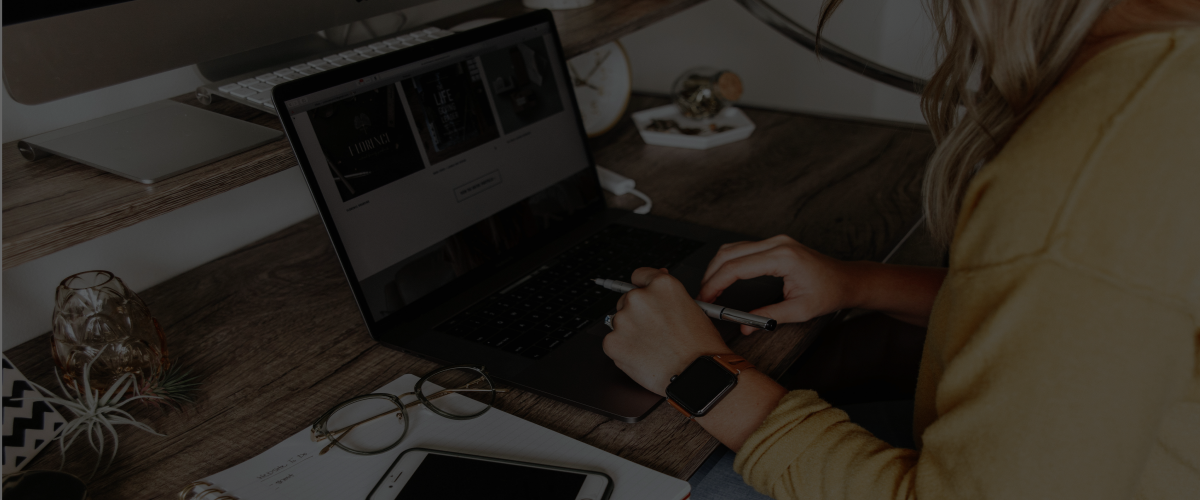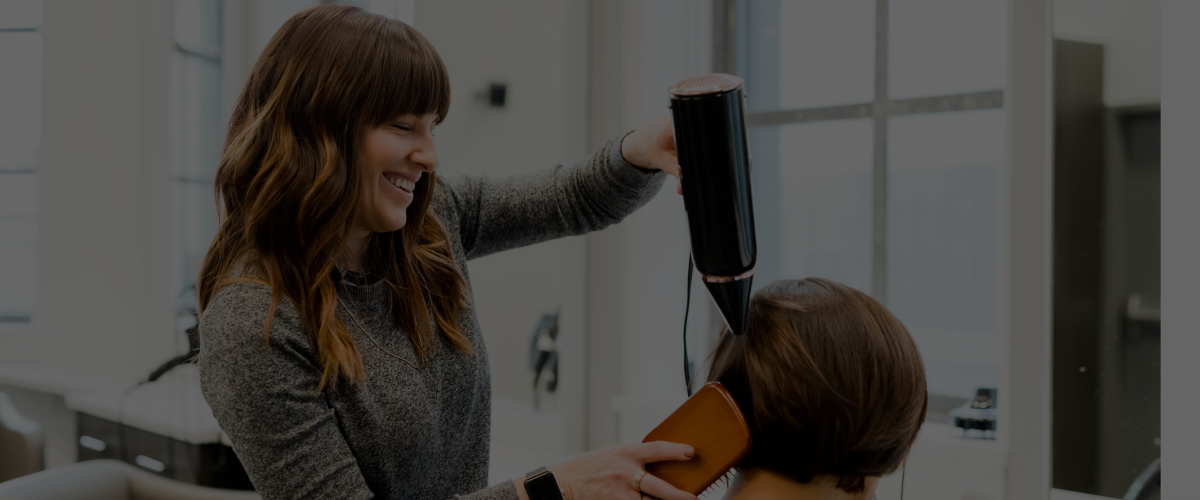Voice User Interface
Alexa Skill
MY Role
Timeline & tools
the challenge
Project Description
The goal of the project was to validate a hypothesis and create an MVP solution in a four week sprint. My hypothesis: 'people with insomnia need a way to track their sleep patterns through voice command' and I confirmed this through industry research and user interviews.
Sleep specialists ask patients for sleep information such as bedtime and nighttime awakenings, but don't accept information collected by a wearable as accurate. Patients don't want to manually record their sleep events as they avoid turning on lights during the night, which might wake them up more. I concluded there was a market fit for a voice activated sleep tracking app.
